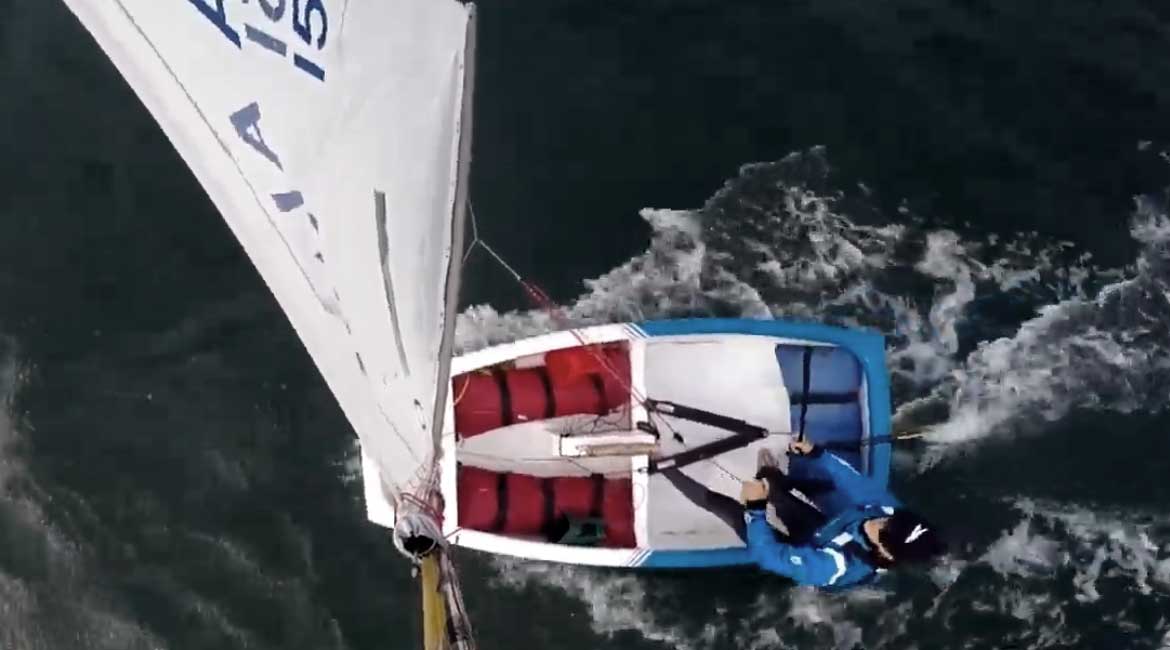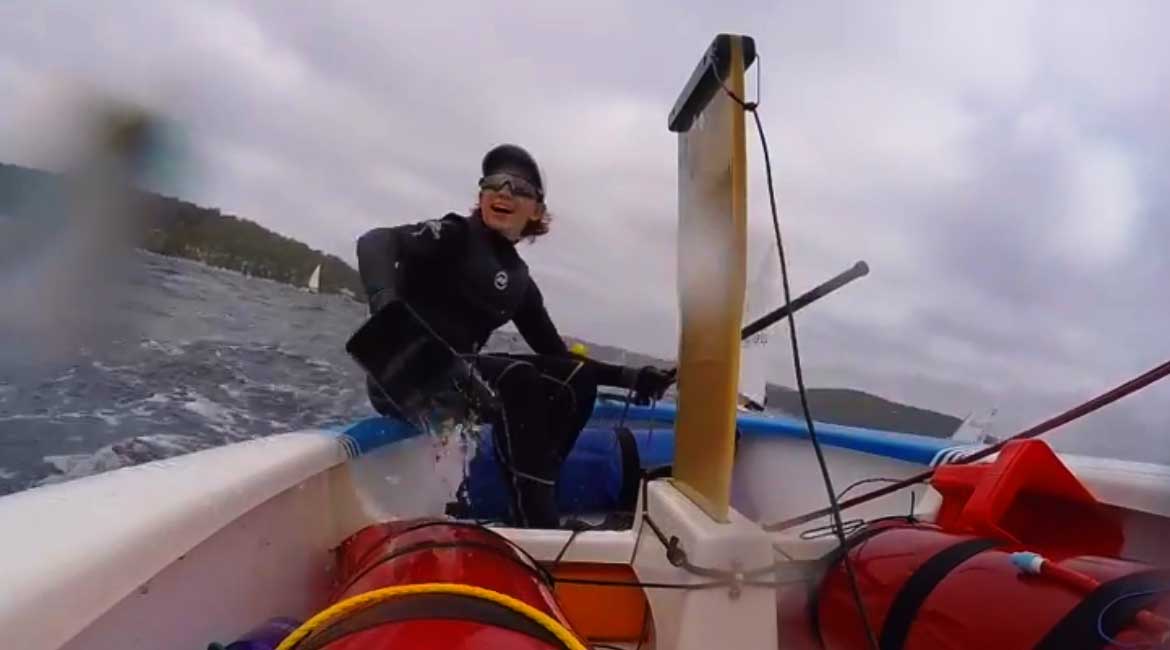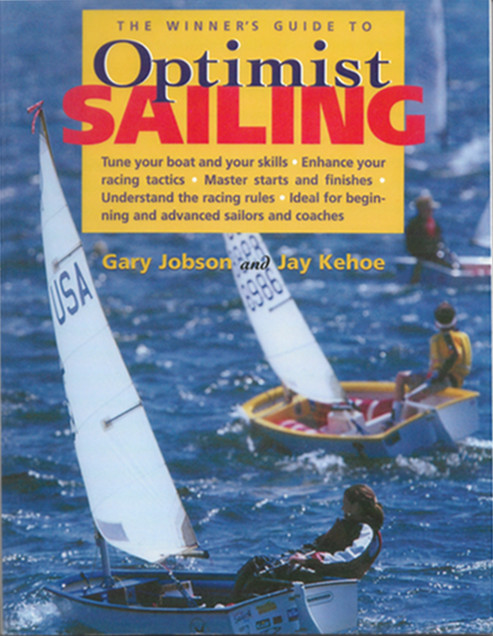Downwind is a great time to make gains if you pay attention, take advantage of opportunities and manage your boat well.
Here are ideas for sailing fast and winning downwind in 14-20 MPH winds provided by 2018 Australian & 2018 New Zealand Optimist Champion Fletcher Walters.
Fletcher shows how he manages his weight to shift the heel of the Opti in waves and pulls in his sail to surf waves. See the note below on Rule 42.
Downwind Preparation
Determine your downwind strategy before you round the top mark.
Think about:
- Which jibe is longest? Sail the long tack first.
- Which side has the best tide, waves and breeze?
Downwind Body Mechanics
Sit Knees Forward.
Lock one heel against the side of the boat and the other foot against the thwart.
Fletcher sits almost on the back corner of the boat to help the bow cross the waves.
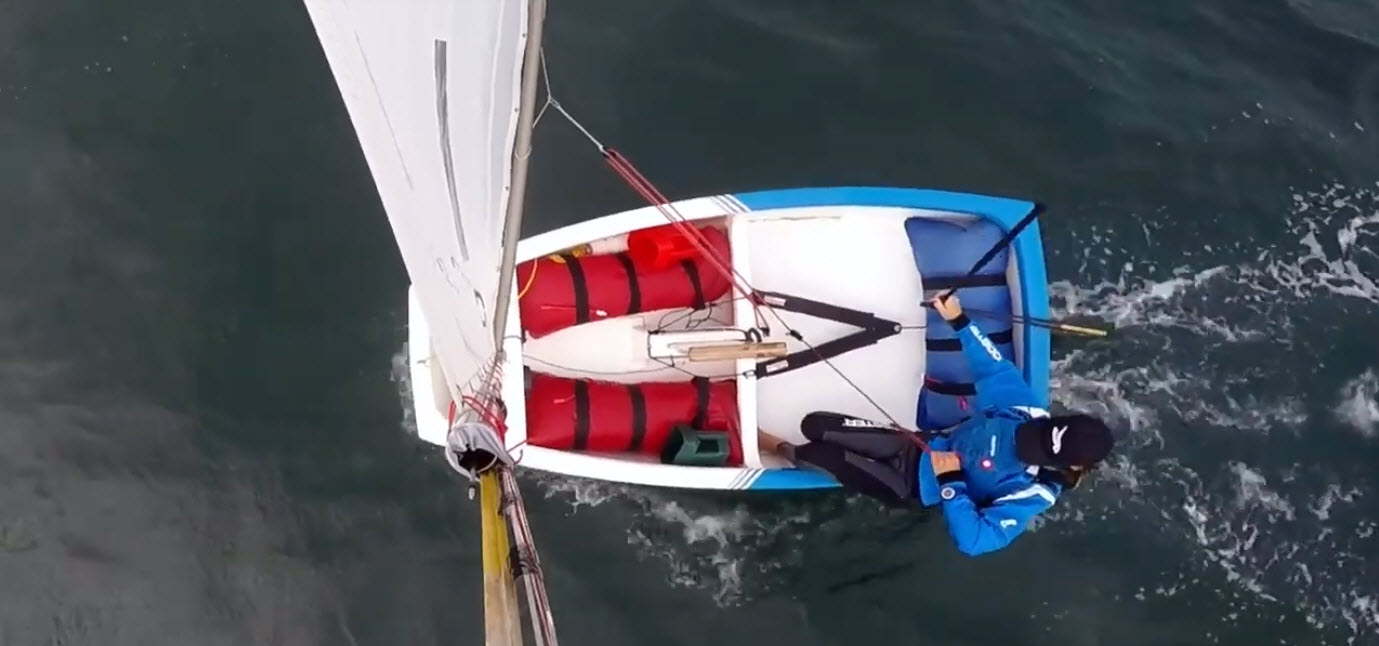
Tiller Handling
Fletcher shows two grip methods:
- Sailing High / Microphone Grip – grip with tiller extension end toward your thumb holding it almost at the end, mainsheet in a bit, sailing high and hiking.
- Deep Downwind / Base Grip – hold tiller extension at its base and sit in a bit and ease sheet a bit.
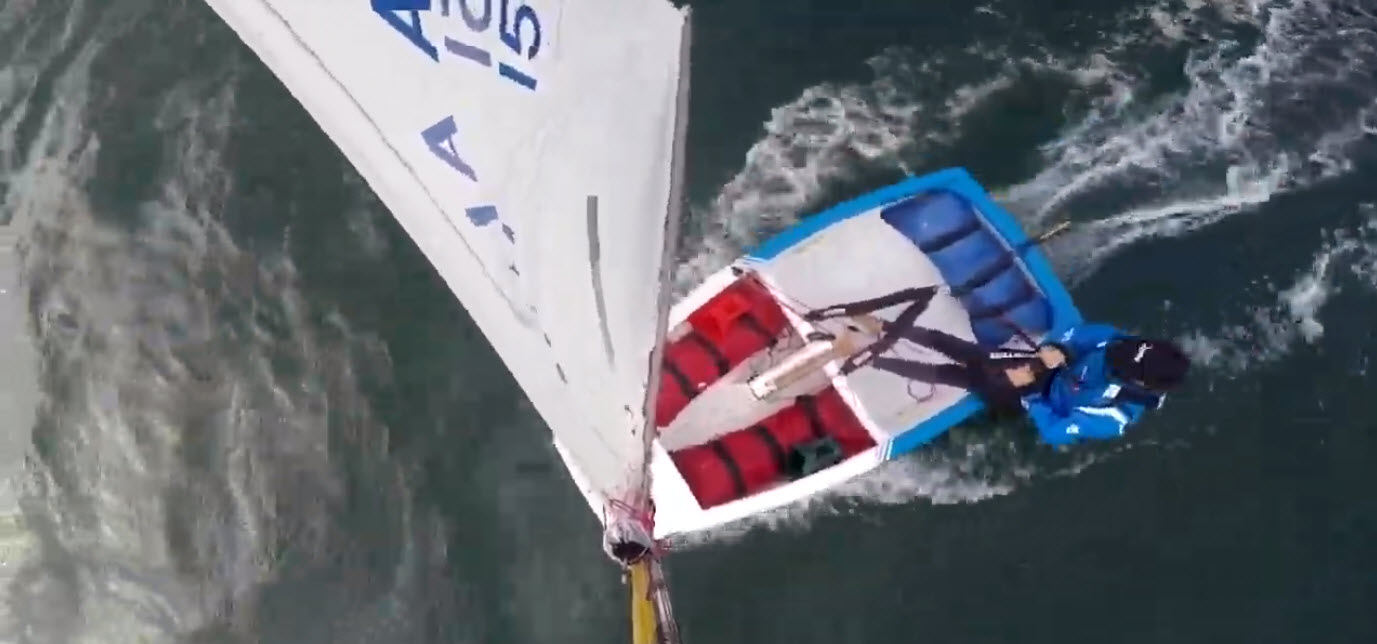
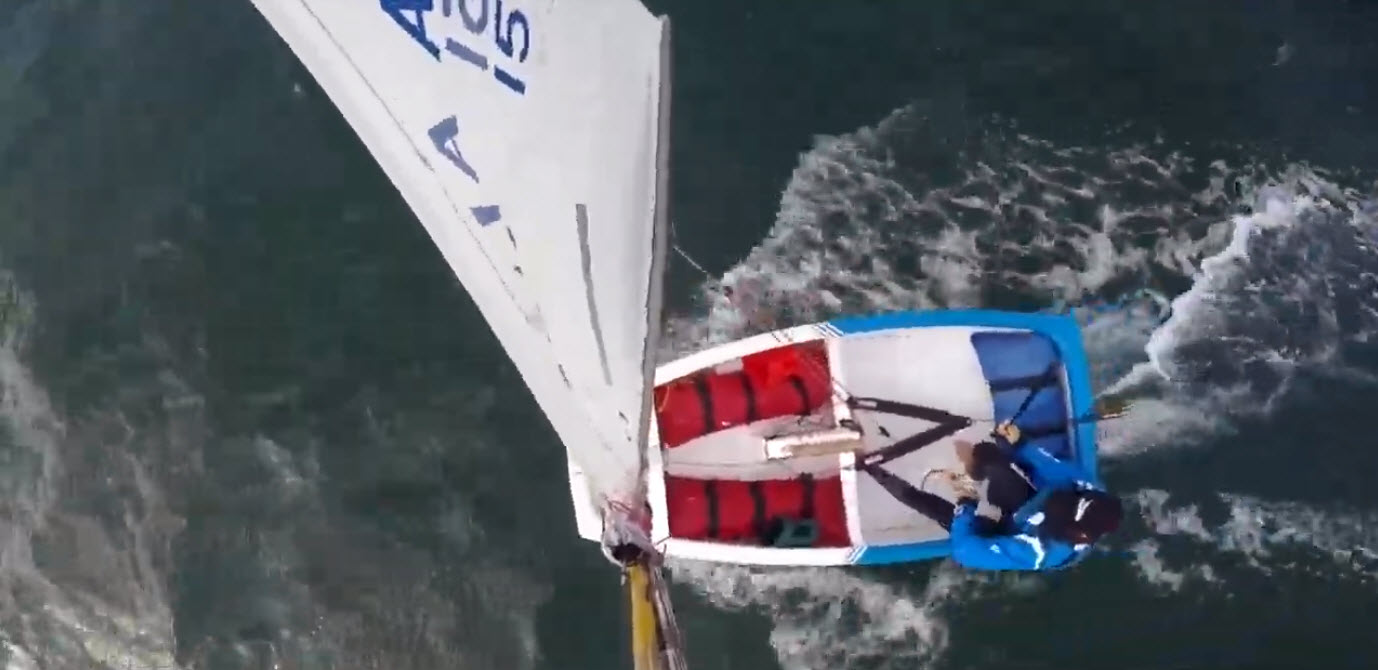
If the wind isn’t enough to plane the hull, then roll the boat to windward to reduce the amount of hull in the water and center the force on the sail over the daggerboard. This reduces drag from the hull and “windward helm” caused by the force on the sail trying to twist the boat on it’s blades (daggerboard and rudder). Read more: https://sailzing.com/optimist-mast-rake/
Sail and bail when you’re heeled up to keep your boat dry and as buoyant as possible to go over the waves.
If you find waves that you can surf down, take advantage of them to gain speed. Fletcher describes how to sheet in to “surf” the wave, but be careful about not pumping such that you violate the rules. As Fletcher says:
“Also remember that pumping a sail once per wave or gust of wind to initiate surfing or planing is allowed, but to qualify as surfing the boat must rapidly accelerate down the front side of the wave.”
Fletcher Walters
Rule 42 – Optimist Sailing
Here’s what World Sailing says about Rule 42 – Optimist, Version 2 (15691):
DOWNWIND
1. Pumping
Permitted actions:
• Trimming a sail in order to trim the boat in the prevailing conditions– PUMP 2
• Pumping a sail once per wave or gust of wind to initiate surfing or planing but to qualify as surfing the boat must rapidly accelerate down the front of the wave. – 42.3(c)
• Making an attempt to plane or surf when conditions are marginal, even if it is unsuccessful – PUMP 7
Prohibited actions:
• Body pumping causing repeated flicks of the leach – PUMP 6
• Trimming a sail in order to fan it – PUMP 1
• Making one pump that initiates planing or surfing and before the boat reaches another wave making a second pull on a sail. It is best observed from aside as it is then easy to see that the second pump is made in between the waves and does not initiate planing or surfing.
• Pumping a sail when already surfing or planing – PUMP 12
• Making three consecutive unsuccessful attempts to plane or surf – PUMP 8
Gathering evidence:
• Are there surfing or planing conditions?
• Does one pump per wave or gust of wind initiate surfing or planing?
• Is the boat pumping while already surfing or planing?
• Could the trim and release be a response to wind shifts, gusts or waves?
• Is the repeated trim and release fanning the sail?
• Can you connect the flicking leach with body movements?
World Sailing, “Rule 42 Most Common Breaches – Optimist”
In a breeze, stay active working the mainsheet and moving your body to get the boat moving through the waves and angled for speed. Fletcher says, “Steer and move your body weight around so the hull is always going “downhill”, not “uphill”.
Lock your foot against the thwart (midship bulkhead) to give your self more leverage to sheet in when needed.

Opti Downwind 12-18 knots Part 1 by Fletcher
To take advantage of a wave, steer up a bit to gain speed and then, when you feel the stern of the boat lift a bit on the wave, pull in the sail firmly with one pull and a weight shift backward and steer down over the wave to accelerate. Steer to try to be on the steepest section of the wave near you. When you’re giving the sail a pull, use your body weight and sail trim to keep the boat flat or slightly heeled to windward rolling over the wave.
Fletcher emphasizes that the sail pull is a combined mainsheet and body weight action (1:33). He shows how he pumps and surfs numerous times downwind. Notice that in the video, he NEVER pulls the sail twice in a row in a immediate action.
Midway downwind you may find a calm time to take a drink and stay hydrated.
Every 30 seconds, check for breeze behind you and competitive threats.
Regularly check your wind indicator and sail trim to make sure that your are pointing and trimmed correctly.
Opti Downwind 12-18 knots Part 2 by Fletcher
Thanks Fletcher for sharing your techniques! Check out more of his videos at his YouTube channel.
Here’s a bonus video by Fletcher from the Opti Worlds 2018 where he challenged competitors from around the world to say “G’day Mate!”.
Opti Worlds 2018 – How To Say Hello In ‘Australian’

